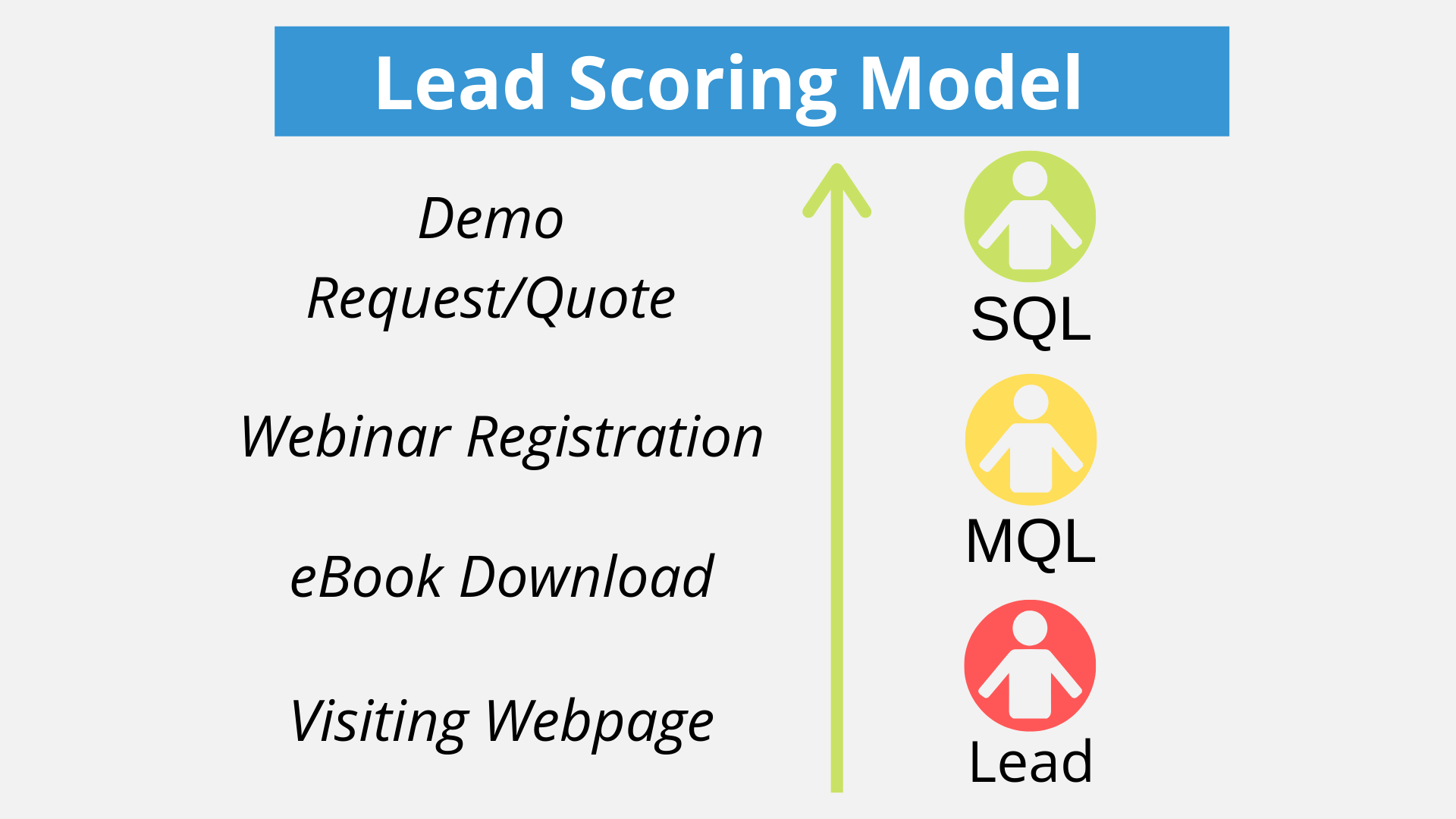How to Implement Lead Scoring for B2B: Lead Scoring Best Practices (Part 1)
Marketing and sales—the age-old stand-off. One minute your sales team argues they’re not getting enough leads in the door. The next day, they are getting too many leads that aren’t ready for a sales conversation. While there’s no magic formula for how to nurture and hand off qualified leads that are sales-ready every time, lead scoring is a critical part of the process and can dramatically improve your success rate.
Most B2B Marketers are no longer measured on the number of leads passed to sales. Now, they must drive leads AND revenue. That’s why it’s increasingly critical to pass the most qualified leads to sales. An accurate and optimized lead scoring model can vastly improve the quality of your leads.
According to a study by Lenskold Group, 68% of marketers pointed to lead scoring as a top revenue contributor. Lead scoring helps you identify engaged leads, leading to increased close rates and revenue.
Establish your Lead Scoring
Often, getting started with lead scoring is the hardest part. First, you need to select criteria that align with your business’ concept of an ideal lead. Your ideal lead should be defined with input from sales and marketing so that all parties agree on the factors that are being included in the definition and evaluation of the perfect lead. This discussion should be focused on reviewing the criteria that affect how likely a lead is to progress from a Marketing Qualified Lead (MQL) to a Sales Qualified Lead (SQL) and finally to a Closed-Won deal. For example: Does the prospect’s company need be of a certain size – measured by revenue? Or, does a visit to your pricing page generally indicate a high rate of buying interest?
Lead scoring models can utilize positive and negative scoring attributes to reach a threshold that deems a lead as “qualified,” thus making it ready to pass to sales. Although many businesses use a score of 100 to indicate a lead is ready to pass, you can choose whatever number fits your model best. Things that can increase a prospect’s lead score include: opening an email, downloading an eBook, or visiting a webpage. Things that can decrease their lead score might be: being in an industry that you don’t serve, no return visits to your site for a prolonged period of time, or receiving an email, but not opening it.
Each of these scoring events should be scored appropriately based on the weighted importance of the activity. For example, downloading an eBook should be considered more significant (and thus given more points) than opening an email. Or, if your sales team prioritizes a certain revenue number over a company size, give more points to a lead whose business meets that revenue target over one who has the right number of employees.
When creating your model, you should also consider the score you set earlier in your marketing and sales meeting.
Certain actions can build someone’s score over time to reach the goal, or specific actions can push them over immediately. For example, you may set a qualification threshold of 100 points, with the following activity scores:
- Email Open = 10 points
- Email Click = 25 points
- Contact Us Form Submission = 100 points
In order to be deemed qualified, a prospect could: open 10 or more emails, click through on 4 or more emails, or submit a form once. In practice, of course, leads often take a combination of all of these actions on their journey to becoming qualified, so make sure you consider the value of each activity and set incremental scores, and your overall threshold for qualification, accordingly.
Don’t Just Set it and Forget it – Optimize Your Lead Scoring
Once you’ve set up a framework for scoring and qualifying leads, it’s important to ensure the model is continuously working.
Even if your company already has a lead scoring system in place, it’s important to review it. We recommend annually. Is it delivering the right quality and quantity of leads? Have you optimized for your target audience — or updated it as you learn more about that audience? Have you looked at your Closed-Won or Closed-Lost opportunities to determine why you achieved those results? What worked and what didn’t? Are you keeping an eye on the competitive landscape, changes within your business or sales process and adjusting your scoring criteria as needed?
Next Step: Building Out a Lead Scoring Model
Keep following along with this series as we walk through lead scoring best practices. In the next part, you’ll learn more about building a lead scoring model that suits your business’ needs, and ensuring that it is continually working to keep both marketing and sales teams happy.
For your reference, here is the next blog for lead scoring best practices:
Part Two – How to Implement Lead Scoring for B2B: Lead Scoring Best Practices (Part 2)
Do you want advice specific to your company?
We’ve helped our clients build out sophisticated lead scoring models across marketing automation platforms like HubSpot, Marketo, and Pardo. We can do the same for you!


